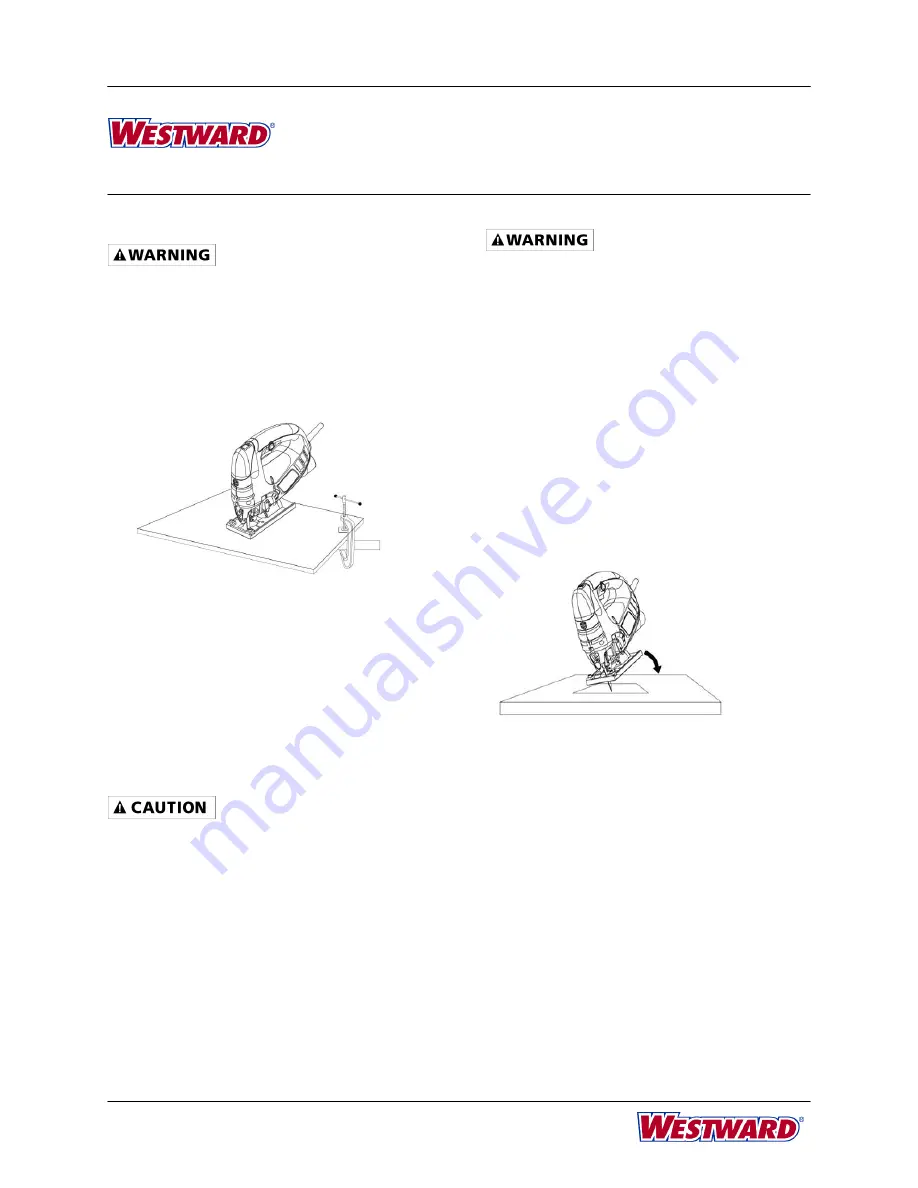
8
21A466
Westward Operating Instructions and Manual
6.5A Orbital Jig Saw
cause serious injury. Never hold the workpiece
with your hand.
Keep your hands and fingers
away from between the motor housing and the
blade holder. Do not reach underneath the
workpiece while the jigsaw is running.
3. Rest the front of the jigsaw base on the
workpiece and align cutting edge of the blade
with the cutting line on your workpiece (Fig. 10).
Make sure the power cord is out of your way and
not in the path the blade will follow.
4. Firmly grip the jigsaw, make sure that the blade is
not in contact with the surface to be cut, and start
the jigsaw
.
5. Once the jigsaw has reached the desired speed,
gradually bring the moving blade into contact with
the workpiece at the appropriate location.
NOTE:
Apply enough downward pressure to keep the
jigsaw steady and only enough forward pressure to
keep the blade cutting freely.
Do not force the jigsaw. Use only
enough force to keep the blade cutting. Excessive
pressure on the blade will cause it to bend and
twist, which may result in breakage.
BEVEL CUTTING
Bevel cutting angles may be adjusted up to 45°
towards the left or right. To adjust the bevel angle,
refer to Fig. 4, 5 & 6.
Once the cutting angle has been verified, proceed
with the cutting activity as outlined in "GENERAL
CUTTING" above.
PLUNGE CUTTING
To avoid loss of control, broken
blades, or damage to the workpiece, always use
extreme caution when making plunge cuts. It is
not recommended to plunge cut anything other
than wood. Wherever possible, drill a pilot hole
3/8" (9.5 mm) or larger in the area to be cut and
start cutting with the blade in the pilot hole. This
will avoid the need to plunge cut.
NOTE: Use only blades with 7 teeth per inch for
plunge cutting.
1. To plunge cut an inside hole, clearly mark the
cutting line on the workpiece.
2. Set the bevel angle at 0°, then lock the base
plate.
3. Tilt the jigsaw forward until it rests on the front
edge of the base plate. Make sure that the blade
is not touching the surface to be cut (Fig. 11).
NOTE:
Make sure the saw blade is inside the area to
be cut.
4. Start the jigsaw and slowly lower the blade onto
the workpiece while making sure the front of the
saw base remains in contact with the workpiece.
Allow the blade to slowly cut through the wood.
5. Continue lowering the blade into the workpiece
until the jigsaw base rests flat on the workpiece.
Continue sawing toward the cutting line and
complete the cut.
METAL CUTTING
Many types of metal can be cut with your jigsaw.
When cutting any kind of material, be careful not to
twist or bend the blades. If the blade chatters or
vibrates excessively, use a finer toothed blade. If the
blade heats excessively, reduce the speed of cutting.
Fig. 10
Fig.11























